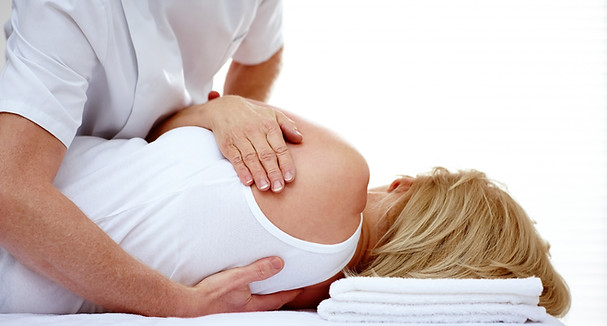OSTEOPATHY
Advanced Bodywork

May help with
Arthritic pain
Cramp
Fibromyalgia
Frozen shoulder
Elbow pain / tennis elbow
Headaches
Joint pains
Back pain
Generalised aches and pains
Lumbago
Migraine prevention
Minor sports injuries
Muscle spasms
Neuralgia
Tension and inability to relax
Rheumatic pain
Sciatica
Uncomplicated mechanical neck pain
What is Osteopathy
Osteopathy is a system of diagnosis and treatment for a wide range of medical conditions. It works with the structure and function of the body, and is based on the principle that the well-being of an individual depends on the skeleton, muscles, ligaments and connective tissues functioning smoothly together.
To an osteopath, for your body to work well, its structure must also work well. So osteopaths work to restore your body to a state of balance. Osteopaths use a touch (palpation), physical manipulation, stretching and massage to increase the mobility of joints, to relieve muscle tension, to enhance the blood and nerve supply to tissues, and to help your body’s own healing mechanisms. They may also provide advice on posture and exercise to aid recovery, promote health and prevent symptoms recurring.
Osteopathy is a regulated profession; all osteopaths in the UK are registered with the General Osteopathic Council and abide by their professional standards.
It is a system of diagnosis and treatment that involves physical manipulation, massage and stretching to ensure the smooth functioning of the skeleton, muscles, ligaments and connective tissue. By increasing the mobility of joints, enhancing the blood and nerve supply to tissues and relieving muscle tension, osteopathy can help restore the body to state of balance.
What to expect:
A typical session will also include advice on posture and exercise to aid recovery, promote health and prevent symptoms recurring.
Your first visit will involve the osteopath taking a thorough case history, asking questions about your presenting complaint and your general health. After this a physical examination is performed to help identify what is causing your pain and possible linking factors such as posture. This will follow with an osteopathic treatment which can involve a variety of techniques which will move your joints. Finally you will be prescribed exercises to support your complaint.
Subsequent visits are shorter and involve a brief catch up about how your complaint has changed since the previous session, with a majority of the time focused on treatment. If new symptoms have arisen then it may be necessary to perform further assessments prior to treatment.
The osteopath want to assess your posture, current ranges of movement and to touch (palpate) the area of muscle tissue which is causing your complaint. it is important to wear clothes you feel comfortable in while exposing enough body to enable the osteopath to assess, ideally bring a pair of shorts and vest/sports bra Your comfort is paramount, you will never be asked to remove any clothing you do not wish to. Osteopaths treat a broad range of people such as; manual workers, office professionals, older people, pregnant women, children and sports people.
This treatment is not yet offered but our physiotherapist or orthopaedic massage experts may be able to help.
Sources
Advertising Standards Authority. 2016. Health: Osteopathy [online] [Accessed 31 July 2019].
General Osteopathic Council. 2019. About Osteopathy. General Osteopathic Council [online]. [Accessed 31 July 2019].
